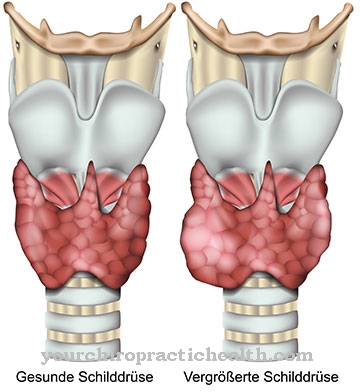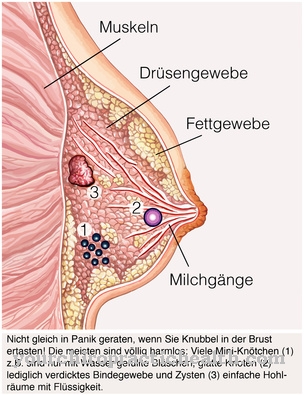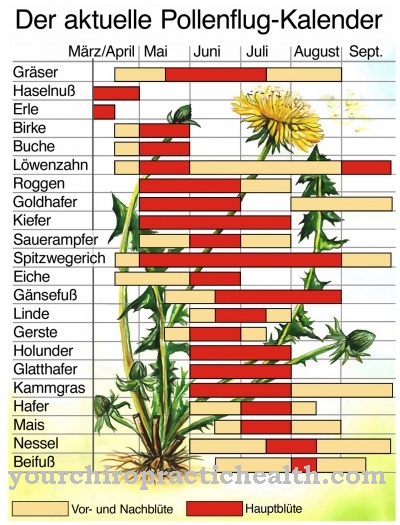A Rhagade or chapped refers to a deep crack in the skin, often triggered by very dry skin, but often a side effect of other diseases. Deep injuries must be treated properly, as in the worst case, blood infections can follow.
What is a rhagade?

© casi - stock.adobe.com
A Rhagade is a classic symptom of dry skin, but it can also be a skin reaction to injury and infection. If the skin is very dry, it can become rough and cracked.
Small cracks then widen and become clear fissures that penetrate deeper layers of the skin. The onset of rhagades is usually preceded by a chain reaction: dry skin often leads to flakes, these begin to itch and the person affected scratches, which leads to deeper injuries. The causes of rhagades can be varied.
It can be due to diet, dry or cold weather, dermatitis, hormonal fluctuations, allergic reactions or other disorders. Chemicals such as alcohol or many skin diseases also lead to fissures such as psoriasis, eczema or Sjögren's syndrome. In the event of deep injuries, dangerous blood infections can occur.
causes
Rhagades can be triggered by environmental factors. The dry room air in the cold winter months is particularly worth mentioning here. Certain diseases also promote rhagades, especially those that affect the nervous system, cause dehydration, or reduce sweat production.
Anhidrosis is a common side effect of diabetes and reduces the perspiration of the skin, which can make it dry and cracked. Dermatitis is an inflammation of the skin with similar consequences that can have many causes. Diabetic neuropathy is often detected when blood sugar levels are high and affects the nerves.
If the skin is only exposed to a particular stressful situation and develops injuries as a result of this, the consequences can be treated with simple therapy. However, if the fissure is a symptom of another cause, special treatment may be necessary.
Symptoms, ailments & signs
A rhagade shows up as a skin tear. This skin crack can vary in size and depth. In any case, it cuts through all layers of the skin. These skin cracks do not necessarily occur as a result of an injury, but are more an appearance of too dry skin and bad weather conditions.
Usually these cracks can occur over a longer period of time. The person concerned first feels a feeling of tension in the corresponding area, but does not yet see any skin crack. A rhagade can basically appear anywhere on the body, but is particularly common in the area of the corners of the mouth. Here the skin tear can also lead to pain and a feeling of tension.
Most of the rhagades in this area are characterized by the fact that they heal very poorly. The symptoms of a tear in the skin increase with the strain and stretching of the corresponding part of the body. The skin cracks can also appear between the fingers or toes. If there are rhagades on the anus, it is usually referred to as a fissure. The cracks can bleed if they go deep into the tissue.
The accompanying symptoms of the skin crack are often dry skin in the vicinity and itching. In addition, existing cracks are prone to secondary infections.
Diagnosis & course
The full treatment of a Rhagade depends on the specific cause of the injury. If it is related to another, more serious disease or disorder, this must be treated above all.
In order to clarify the circumstances of the Rhagade, the doctor may ask the following questions about diagnosis: How long have you had the Rhagade? Do you also have these injuries in other parts of the body? Did you experience redness, itching, and pain?
Does the affected area feel warm? Has the affected area already bled? Have you had or do you have a rash? Did you have herpes or something similar on the affected area? Did you have a fever? Do you suffer from an allergy? Have you been bitten by an insect?
Complications
In most cases there are no particular complications with a rhagade. However, incorrect and, above all, unsanitary treatment can lead to serious infections or even blood poisoning. In the worst case, this can lead to the death of the patient. Those affected suffer from severe cracks in the skin with this disease.
The cracks can appear in different parts of the body and possibly also significantly reduce the aesthetics of the person concerned. This can lead to inferiority complexes or reduced self-esteem. Furthermore, the skin itself is dry and cracked and often affected by itching. Fever or rashes on the skin can also occur and have a very negative effect on the patient's quality of life.
Treatment of the disease takes place without complications with the help of creams and ointments. In the case of inflammation or infection, antibiotics are given. As a rule, the disease progresses positively. The patient's life expectancy is also not negatively affected by the disease. However, it is possible that the disease can recur despite treatment.
When should you go to the doctor?
Since a rhagade does not usually heal itself, this disease should be treated by a doctor. Only with proper treatment can further skin complications be avoided. In the worst case scenario, the affected person can suffer from blood poisoning and die from it without treatment.
A doctor should be consulted if the patient suffers from severe cracks in the skin. The cracks can appear in different areas of the skin and have a negative effect on the aesthetics of the person concerned. If these cracks appear over a longer period of time and do not go away on their own, a doctor must be consulted. The cracks can also appear at the corners of the mouth. Since the rhagade indicates another underlying disease, a doctor should always be sought early to determine this underlying disease in order to avoid further complications. Itching on the skin can also indicate the rhagade and must be examined by a doctor.
Treatment & Therapy
At a Rhagadethat has no more serious cause, certain precautions and maintenance tips can be followed to improve the situation. Moisturizing creams and oils such as olive oil keep irritated skin elastic and support the healing process.
Wearing rubber gloves when washing dishes or doing similar activities prevents the skin from drying out further. Contact with chemicals or alcohol on the skin should also be avoided. If the injuries to the skin become too deep, the dermatologist should be consulted for appropriate treatment. Cortisone ointments are a common form of initial treatment.
Their use reduces redness and swelling, allowing the injured skin to heal. If an infection is already evident, an ointment containing antibiotics may be prescribed to fight the bacteria entering the wound. Lactic acid lotion can also be used for dyshidrosis to prevent flaking and peeling of the skin. These creams are usually used once or twice a day and may have to be continued for weeks.
prevention
if the Rhagade Is related to another disease or skin problem, it cannot really be prevented. In general, dry and chapped skin, especially in the winter months, should be treated with moisturizing creams in good time to avoid possible worse injuries.
Aftercare
Rahgaden can often be very painful, especially since they usually occur in sensitive areas such as the anus or mouth. Usually these arise from a lack of moisture. If this is the reason for the appearance of a rhagade in those affected, they can treat the rhagade with a commercially available moisturizing cream.
Simple ointments or oils can also be used to treat the rhagade. Lactic acid and lotions have also been found to have a positive effect on rhagades. However, if the rhagade occurs due to any other cause, it is recommended to consult a dermatologist. This will then treat the rhagade accordingly. In most cases, cortisone is used for this.
In some places where the rhagades can occur, there is a high risk of infection in those affected. In the worst case, these can lead to the death of those affected. For this reason, rhagades should always be examined and treated by a doctor. In many cases, those affected are given a special antibiotic. This should be taken by the person concerned strictly according to the instructions of the attending physician. Rhagades must never come into contact with sharp substances. This should be avoided by wearing gloves.
You can do that yourself
Rhagades, also known as fissures, can be very painful because they tend to occur in sensitive areas such as the mouth or anus. In addition, they are usually small, but always very deep and separate all layers of the skin. Rhagades arise in places where the skin is no longer elastic enough to follow natural movements or they arise due to a skin disease such as eczema.
If there is only a lack of elasticity, the patient can use commercially available, moisturizing creams, ointments and oils to ensure that the affected area becomes supple again. Lotions with lactic acid have also proven themselves here. If the rhagade is due to a skin disease, it should be examined by a dermatologist and treated with specific agents. Cortisone is often the first choice here.
Depending on where the rhagade is located, there is a risk of infection. Such infections can even be fatal, so these rhagades urgently need medical treatment. In many cases, the doctor will then prescribe an antibiotic for their patient. It should also be taken consistently by the patient according to the doctor's instructions. Rhagades should not come into contact with chemicals or harsh cleaning agents. If you have them on your hands, for example, you should wear gloves when washing up or cleaning to prevent the skin from drying out further.



.jpg)


.jpg)

.jpg)



















